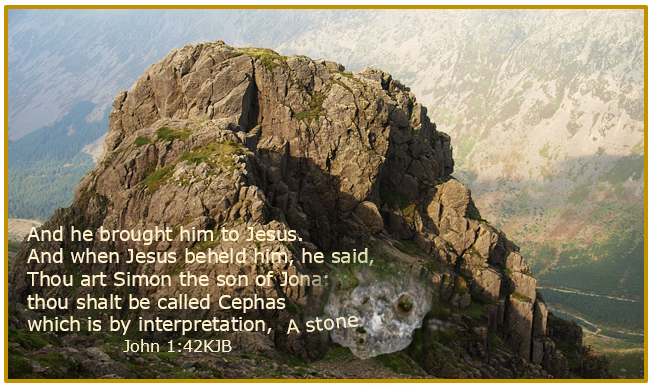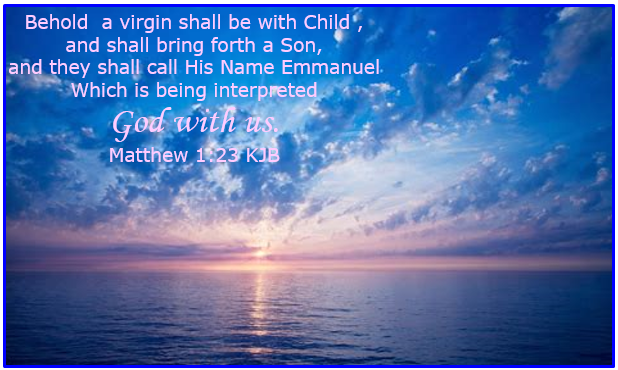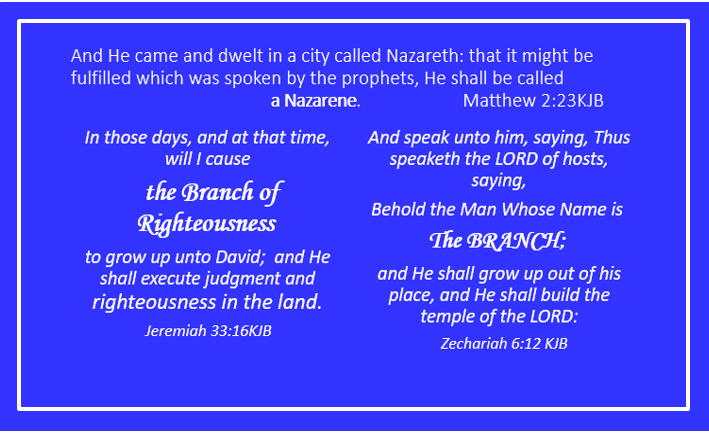Written by W.G. Finlay DD, Covenant Message, November 1979.
Posted and images added by Jackie
“Whom do men say that I, the Son of man, say that I am? And they said, Some say that thou art John the Baptist: some, Elias, and others. Jeremias, or one of the prophets. He saith unto them, But whom say ye that I am? And Simon Peter answered and said, Thou art the Christ, the Son of the living God.” (Matthew 16:13-16).
The controversy concerning the Identity of the Lord Jesus Christ has raged down the centuries and today, nineteen hundred years after His Birth, the subject remains the area of more than a little confusion. In Protestant evangelical circles, He is held to be a Jew. In Roman Catholic thinking, He appears to be an enigma which, if the accompanying photograph of the Pope’s celebration of pontifical Mass Warsaw’s Victory Square is anything to go on, would suggest that both Madonna and Child were of the Black- or Coloured race. In the leftist political arena of Christianity as exemplified by the World Council of Churches, He is held as Universal Man – totally raceless and wholly committed to the ideal of the brotherhood of man. In Jewish circles He is still said to be an impostor and concerning His Birth, the Jewish Encyclopedia (1904 Ed, Vol 7, page 170) comments on the prevailing thought that He was the illegitimate son of Panthera, a Roman soldier.
Over recent years, a new trend has developed which has given substance to the question asked by the Lord Jesus Christ and as posed in the quotation which prefaces this article – ‘Whom say ye that I am?’ In those days, and despite the religious fanaticism of the Pharisees, men were still entitled to their own views, but today it would appear that unless one conforms with prescribed identity norms, State machinery is invoked which curtails the publishing of views other than those prescribed. In South Africa, the July edition of the S.A. Observer was banned, and among the reasons given for this banning was that the Editor contended that Jesus was not a Jew. It should be stated that this was only one of several reasons, but it surely calls into question the Christian liberty in a professed Christian country.
WHO WAS JESUS OF NAZARETH
Unless one is prepared to discount the Gospel accounts, one must provide the unequivocal answer to this question with the confession The Christ, the Son of the living God – just as Peter did. It would not be a digression to continue with Matthew’s account of the Lord’s reaction to this confession, for as with His Identity, much confusion has arisen because of theological interpretation of His response. He said:
- “Blessed art thou Simon Bar-Jonah: for flesh and blood hath not revealed it unto thee, but my Father which is in heaven. And I say also unto thee, That thou art Peter, and upon this rock I will build my church; and the gates of hell shall not prevail against it”. (Matthew. 16:17-18).
There is obviously something amiss here for in one breath the Lord calls him ‘Simon Bar-Jonah’ and in the next, ‘Peter’.
In John 1:42 i.e. when Simon Bar-Jonah was called to follow the Lord, Jesus had nicknamed him ‘Cephas’ or more correctly ‘Petros’ which of course, means a stone.
In Isaiah 51:1-2 Abraham is referred to as a ‘rock’ from whence the Israel family was hewn and Peter, because he was a chip of that ‘rock’ was re-named as ‘Petros,’ a stone chipped from that rock.
- “Hearken to me, ye that follow after righteousness, ye that seek the LORD: look unto the rock whence ye are hewn, and to the hole of the pit whence ye are digged. Look unto Abraham your father, and unto Sarah that bare you: for I called him alone, and blessed him, and increased him.” (Isaiah 51:1-2)
Thus, in the Lord’s reaction, one is directed to the national family of the Old Testament – the family whose commitment was totally to the accomplishment of God’s oath-bound Covenant in the earth. Here was one of the Covenant family which acknowledged that He, Jesus, was THE Anointed One as God the Father had promised through His servants the prophets Who would redeem Israel, make an end of sin and bring in everlasting righteousness.
- “Seventy weeks are determined upon thy people and upon thy holy city, to finish the transgression, and to make an end of sins, and to make reconciliation for iniquity, and to bring in everlasting righteousness, and to seal up the vision and prophecy, and to anoint the most Holy”. (Daniel 9:24)
It was on this confession that the Lord stated that He would ‘build’ or ‘confirm’ (Greek: oikodomeo) His ‘church’. It is, of course, a matter of history that theologians prefer the word ‘church’ to the Greek word ecclesia for while the Greek word means ‘a called out assembly,’ which in the days when it was used was an exclusive term precluding slaves and aliens, the Greek kuriakos (belonging to the Lord) is preferred because it suits the doctrines of men. If the Lord Jesus Christ intended to build or inaugurate a ‘church’ on Peter’s confession, why did He not use the Greek word kuriakos which was the etymon of the modern English word ‘church’ — why did He use the word ecclesia, a word understood by the disciples as having an exclusively national sense?
THE FAMILY LINE
While the Lord told Peter that ‘flesh and blood’ had not revealed it to him, but His Father in heaven, the written Scriptures today provide their testimony and one is able to see the identity of the Lord as neither Jew, nor Coloured nor Universal man. There are, of course, two accounts which purport to be the genealogy of the Lord Jesus Christ, but as these are examined, it becomes obvious that they are not the same and, in point of fact, deal with two branches of the same family, i.e., two sons of David, Solomon and Nathan.
The first account is recorded by Matthew who shows the descent of Joseph, who became Mary’s husband after the Birth of the Lord, from David via Solomon by Bath-Sheba.
- “And David comforted Bath–sheba his wife, and went in unto her, and lay with her: and she bare a son, and he called his name Solomon: and the LORD loved him.” (2nd Samuel 12:24)
As the Advent of the Lord was characterised by the Virgin Birth one wonders why this genealogy of Joseph was included and why it was begun with the preface: “The book of
the generation of Jesus Christ, the son of David … etc.” One can only surmise that Matthew, who was in all probability a Levite,
- “And as he passed by, he saw Levi the son of Alphaeus sitting at the receipt of custom, and said unto him, Follow me. And he arose and followed him”. (Mark 2:14).
was very conscious of the legal implications as they dominated the thinking of the true Israelites who had been converted to Phariseeism
- “Woe unto you, scribes and Pharisees, hypocrites! for ye compass sea and land to make one proselyte, and when he is made, ye make him twofold more the child of hell than yourselves”. (Matthew 23:15).
and he therefore included the genealogy of Joseph although making it very clear that he, Joseph, did not ‘beget’ Jesus, Who was called Christ. Having overcome the legal hurdle, Matthew then proceeds to elaborate on the Virgin Birth and draws attention to the prophecy of Isaiah, which was made in the national context of Israel. He relates that Joseph was about to end his engagement to Mary because she was with child when the angel of the Lord appeared to him and told him of the circumstances of the conception.
- “And she shall bring forth a son and thou shalt call his name JESUS: for he shall save his people from their sins. Now all this was done, that it might be fulfilled which was spoken of the Lord by the prophet, saying, Behold, a virgin shall be with child, arid shall bring forth a son, and they shall call his name Emmanuel, which being interpreted is, God with us” (Matt. 1:21-23).
The information which the angel of the Lord imparted to Joseph was no sudden and startling revelation of a new development which was to take place – it was a reiteration of that which the prophets of Israel had written. Joseph, being a pure Israelite (the genealogy proves the point) and unimpeded by Pharisaic delusions, could understand and accept immediately the
fulfillment of Israelitish prophecies made some five and seven centuries earlier. He could recognize the Isaiah prophecy concerning the sign of the Virgin Birth, and he could accept the statement, “He shall save His people from their sins,” as this had been stated by both Isaiah (53:12) and Daniel (9:24). Matthew’s account therefore, apart from overcoming the legal hurdle, presented the Advent in a national context, which is precisely what the Lord Himself insisted
- “But he answered and said, I am not sent but unto the lost sheep of the house of Israel”. (Matthew. 15:24).
- and what He stated to Peter “And I say also unto thee, That thou art Peter, and upon this rock I will build my church; and the gates of hell shall not prevail against it”. (Matthew. 16:18).
The second genealogy of the Lord is presented in Luke 3:23-38 and is indeed the line of Mary, the human vehicle through which the Word was made flesh.
- “And the Word was made flesh, and dwelt among us, (and we beheld his glory, the glory as of the only begotten of the Father,) full of grace and truth”. (John 1:14).
It is absolutely true that Joseph is mentioned as the male head of the line,
- “And Jesus himself began to be about thirty years of age, being (as was supposed) the son of Joseph, which was the son of Heli”, (Luke 3:23)
but unlike the natural generation found in Matthew’s statement: “Matthan begat Jacob and Jacob begat Joseph the husband of Mary,” etc, no such natural generation is found. In the Authorised Version it is stated that he was ‘the son of Heli’ and notwithstanding the fact that the word ‘son’ does not appear in the Greek text and is characterised as such by italics in the Authorised Version, the relationship is derived from his marriage to Mary – he became the son-in-law to Heli.
The account in Luke’s Gospel does more than merely identify the Davidic ancestry of Mary – it amplifies the quotation made by the angel of the Lord to Joseph when he said that He, Jesus, would ‘save his people from their sins’ (Matthew. 1:21).
If one has access to the Greek text of Luke’s account, it will be noted that the translators have inserted the words ‘the son’ before each name in the genealogy, which are certainly not in the original text. Conversely, they omitted the definite article which, in the text, precedes each proper name and although this may have made the English translation grammatically correct, it has certainly clouded the issue concerning the identity of ‘His people’. If Mary’s genealogy is followed through from Heli, it will be noted that it passes through the Davidic house, through Abraham, through Shem, through Noah and back to Enos, the son of Seth who was the son of THE Adam. If the Authorised Version is reconsidered it will be noted that verse 38 of Luke 3 reads: “Which was the son of Enos, which was the son of Seth, which was the son of Adam, which was the son of God.” The Greek text reads: “Which was of the Enos, which was of the Seth, which was of the Adam, which was of the God.” That Truth has been sacrificed for grammatical correction cannot be doubted here, for in eliminating the definite article, which precedes the word Adam, confusion arises as to which Adam is referred to – that in Genesis 1:26 or Genesis 2:7?
There is absolutely no evidence to suggest that the Adam of Genesis 1:26 (simply translated as ‘man’ in the Authorised Version) was given any law whereas the Adam (again simply translated as ‘man’) in Genesis 2:7 was certainly given the Law as was symbolised in the ‘tree of knowledge of good and evil.’ Having transgressed the Law of God – an act which gave
rise to the expression ‘sin’
- Whosoever committeth sin transgresseth also the law: for sin is the transgression of the law” (1st John 3:4).
– it became necessary that propitiation be made for this, hence the angel’s statement: “He shall save his people from their sins.’’ The family line is thus clear and unmistakable, and cannot be equated with the contention of Universal Man.
He Shall Be Called a Nazarene In Matthew 2:23, which deals with the sequel to the death of Herod who had ordered the massacre of all children under the age of two years, it will be noted that Joseph, having sought safety in Egypt, now decided to return home.
HE SHALL BE CALLED A NAZARENE
While this statement positively dissociates Jesus of Nazareth from the Jews, it creates a problem which can only be solved by considering the Hebrew and Greek texts once again. The fallacy of the statement ‘Jesus the Jew’ will become obvious as the subject of ‘Nazareth’ is explored, and the first step in this direction is the consideration of the word ‘Nazareth’ itself.
The first point which strikes one is that nowhere in the Old Testament does this name appear, which immediately brings into question the authenticity of the statement: “He shall be called a Nazarene.” If no such place existed in the Old Testament, how could the prophets write about it? The Hebrew root which developed into the name ‘Nazareth’ was netzer which literally means ‘a branch’ and this word is found in the Old Testament and is associated with the situation arising out of Israel’s transgression of God’s Holy Law.
It will be recalled that through Solomon’s transgression of the Law, the twelve-tribed Israel kingdom was divided into two sections
- “So when all Israel saw that the king hearkened not unto them, the people answered the king, saying, What portion have we in David? neither have we inheritance in the son of Jesse: to your tents, O Israel: now see to thine own house, David. So Israel departed unto their tents. But as for the children of Israel which dwelt in the cities of Judah, Rehoboam reigned over them. Then king Rehoboam sent Adoram, who was over the tribute; and all Israel stoned him with stones, that he died. Therefore king Rehoboam made speed to get him up to his chariot, to flee to Jerusalem. So Israel rebelled against the house of David unto this day. And it came to pass, when all Israel heard that Jeroboam was come again, that they sent and called him unto the congregation, and made him king over all Israel: there was none that followed the house of David, but the tribe of Judah only”. (1st Kings 12:16-20).
The majority northern kingdom became subject to successive waves of Assyrian invasions until finally, in 721 BC, its capital. Samaria, was finally taken. If one follow the history of these invasions and notes the degree of impact that these made, it will be noted that while the territory of the tribes of Zebulun and Naphtali in the region of the Sea of Galilee were afflicted, there is absolutely nothing to suggest that all the people of these tribes were taken into captivity as were the Ephraimites of Samaria. Isaiah, who wrote during the period when the Assyrian invasions were taking place, wrote of God’s intention to bring the northern kingdom to an end, but in the process, some would be left in the land in the northern regions and away from the centre of activity, as it were.
- “And in that day it shall come pass, that the glory of Jacob shall be made thin, and the fatness of his flesh shall wax lean (it should be noted that nothing is said of making it disappear altogether W.G. Finlay). And it shall be as when the harvestman gathereth his corn, and reapeth the ears with his arm, and it shall be as he that gathereth ears in the valley of Rephaim. Yet gleaning grapes shall be left in it, as the shaking of an olive tree, two or three berries in the top of the uppermost bough, four or five in the outmost fruitful branches thereof, saith the Lord God of Israel.”(Isaiah. 17:4-6).
These ‘fruitful branches’ are written of as parah netzer – the word parah being dropped and the people and land simply being known as netzer – which eventually developed into Nazareth. One may therefore see in the name Nazareth an association with those in Israel who were not taken into the Assyrian captivity and who remained in their land despite the changes which were taking place in the territory of their brethren in the south. While the word netzer applied to those Israelites who were the ‘branches’ of the uppermost bough of Jacob, Isaiah made reference to another netzer:
- “And there shall come forth a rod out of the stem of Jesse, and a Branch shall grow out of his roots”(Isaiah. 11:1).
The association of this ‘Branch’ which came from the stem of Jesse and those ‘branches’ of Jacob which had been left in the land was unmistakable for in John 1:11 it is stated that “He came unto his own, and his own received him not” while in Matthew 13:54, ‘His own’ is qualified as the people of Nazareth.
- “And when he was come into his own country, he taught them in their synagogue…57/And they were offended in him. But Jesus said unto them. A prophet is not without honour, save in his own country, and in his own house.” (Matthew 13:54 and 57)
In this, one may see that He was indeed a Nazarene – in the first instance THE Branch among the branches of Jacob and secondly a Nazarene because He lived and taught there except when it was necessary for him to visit the Judaean capital of Jerusalem
To be continued.



